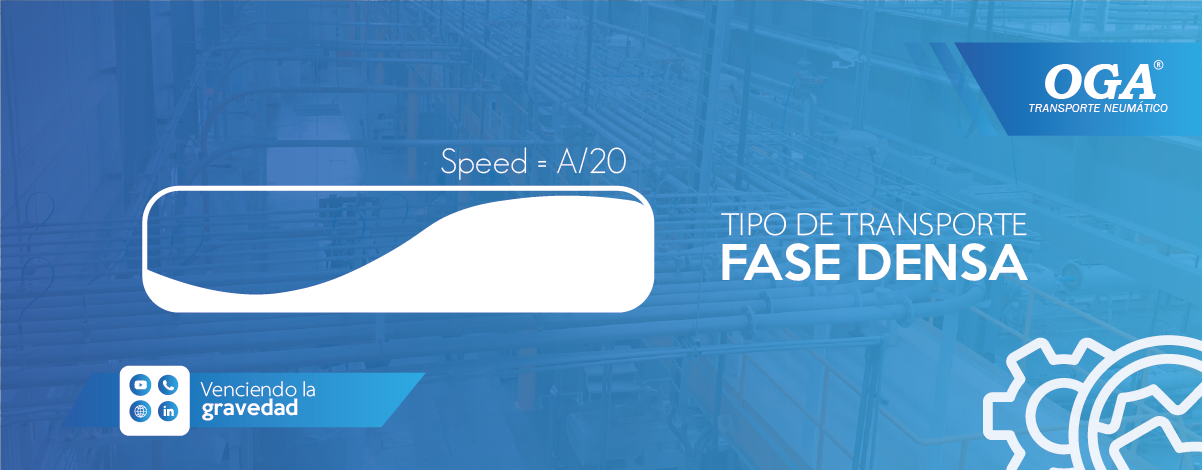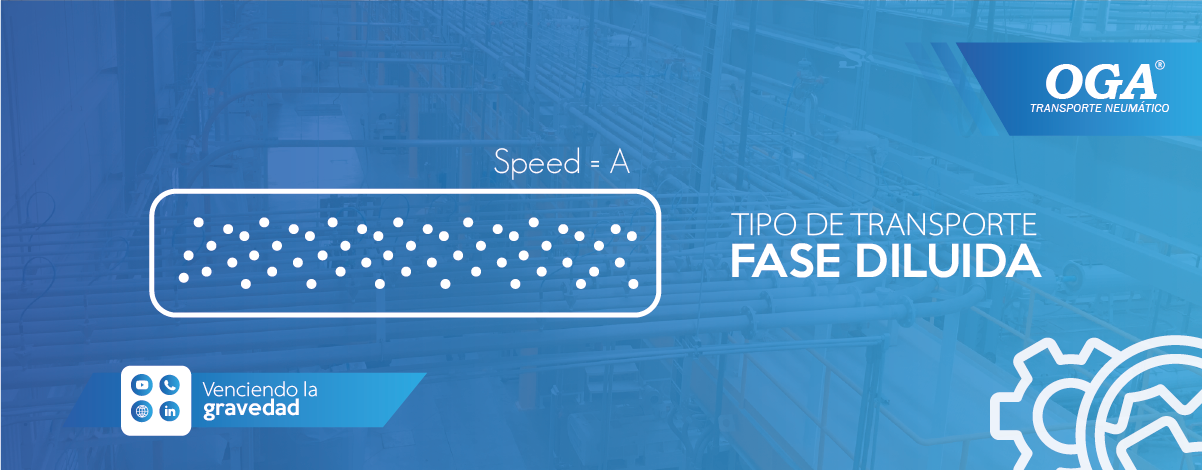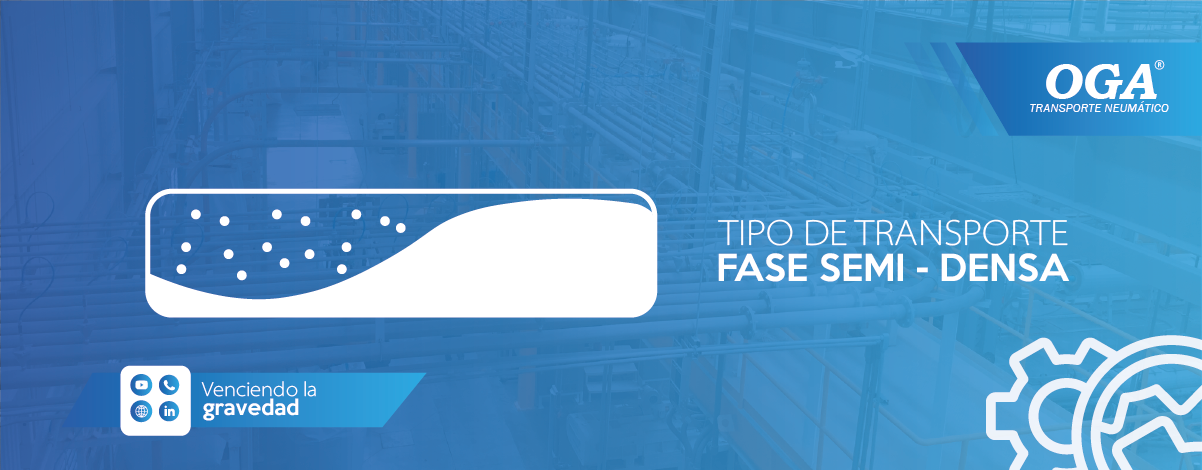


Pneumatic Transport
Pneumatic transport represents a homogeneous blend of theoretical science based on engineering, concepts, and adjustments developed by manufacturers of this technology. Based on its own experience, OGA agrees with significant theorists in pneumatic transport who indicate that «pneumatic transport resides on the boundary between science and art, where the success of implemented systems depends on balancing engineering theory with manufacturer experience.» OGA supports its designs with a sizable engineering team and over 1,200 systems designed and manufactured in its 20 years of experience in this field.
Pressure
Pressure is the ratio of the force applied perpendicularly to a given surface to the area of that surface (p = F/S). Its magnitude is scalar. Therefore, the greater the force acting on a given surface, the greater the pressure, and the smaller the surface area for a given force, the greater the resulting pressure.
Atmospheric Pressure
Atmospheric pressure is the force exerted by atmospheric air on the Earth’s surface. Atmospheric pressure depends on its state (solid, liquid, or gas). For gases, pressure is generated uniformly in all directions since the gas occupies all space within a specific surface.
Units of Measurement
-
International System of Units (SI):
- Pa = Pascal = 1N/m².
-
Centesimal Gravitational System (CGS):
- B = Baria = 0.10 Pa.
-
Technical Gravitational System:
- Kgf/cm² = Kilogram-force per Square Centimeter = 98066.5 Pa.
-
Technical Atmospheric System:
- mm.c.d.a. = Millimeter Water Column = 9.80665 Pa
- at = Technical Atmosphere = 98.0665 Pa
-
English System:
- PSI = Pounds per Square Inch = 6894.76 Pa
-
Other Systems:
- atm = Atmosphere = 101325 Pa
- mmHg = Millimeter of Mercury (Torricelli) = 133.32 Pa
- inHg = Inches of Mercury = 3386.38 Pa
- Bar = Bar = 100000 Pa
Flow Rate
Flow rate is the amount of fluid passing through a duct section per unit of time. It can also be identified as volumetric flow or volume passing through a given area in a unit of time. Qa = V/T
The forces to be considered for flow rate calculation in pneumatic transport systems are: gravity, differential pressure, and inertia.
Units of Measurement
-
International System of Units (SI):
- m³/s = Cubic Meter per Second = 1000 l/s = 35.31 ft³/s
- l/s = Liters per Second = 0.001 m³/s = 0.03531 ft³/s
-
Other Systems:
- m³/s = Cubic Meter per Second = 1000 l/s = 35.31 ft³/s
- l/s = Liters per Second = 0.001 m³/s = 0.03531 ft³/s
Gravity Force
Gravity force is the physical force exerted by the planet’s mass on objects within its gravitational field. Gravity’s action can explain why all bodies remain on the surface or float in the atmosphere. Hence, in pneumatic transport, this phenomenon is crucial as it causes sedimentation of solids inside the pipeline.
Differential Pressure Force (dpf)
Differential pressure force is the difference in pressure measurements between two points in a system. Therefore, it is the force used to prevent fluid from expanding. In pneumatic transport, differential pressure is considered the resistance acting in the direction of flow, towards the lower pressure.
Inertia Force (fi)
Inertia force is the force acting on a mass when a body undergoes acceleration and is detectable only within that accelerated system. In pneumatic transport, inertia force is used to overcome natural resistance to flow.
Velocity
Velocity is a vector quantity in physics that expresses the displacement of an object per unit of time.
v = m/s
Different velocities can be found in classical mechanics, such as:
-
Average Velocity:
- Also known as average speed, it is the ratio of the distance traveled to the time taken.
-
Instantaneous Velocity:
- It is a tangent vector to the trajectory, allowing the determination of the velocity of a mobile object moving on a trajectory when the time interval is infinitely small.
-
Relative Velocity:
- Relative velocity is the value of the velocity of one observer as measured by another. To calculate relative velocity, the intervention of two observers is necessary.
vBA = vB – vA The characteristic velocity of dilute-phase pneumatic transport is
vi = 18 m/s (Minimum) and vf = 46 m/s (Maximum).
The characteristic velocity in dense phase is
vi = 1 m/s (Minimum) and vf = 10 m/s (Maximum)
Units of Velocity Measurement
-
International System of Units (SI):
- m/s = Meter per Second = 0.001 km/s
-
Old Metric System:
- Km/s = Kilometer per Second = 1000 m/s
-
Centesimal System of Units:
- cm/s = Centimeter per Second = 0.01 m/s
-
Anglo-Saxon System of Units:
- ft/s = Foot per Second = 0.3048 m/s
- Mph = Mile per Hour = 0.447 m/s
Law of Conservation of Energy
The law of conservation of energy states that the total energy in any isolated physical system remains constant over time, even though energy may transform into another form. An example of this phenomenon is easily distinguished when electrical energy is transformed into heat energy in a heater.
Applied in pneumatic transport systems, where there is a constant flow of fluid in a pipeline, this law ensures energy remains constant.
Law of Conservation of Matter
The conservation of matter indicates that matter is neither created nor destroyed, only transformed. Therefore, in pneumatic transport systems, the mass flowing through any pipeline section remains constant.
Potential Energy
Potential energy is the capacity of a system to perform work solely based on its position or configuration. It can also be thought of as the stored energy in the system or as a measure of the work a system can deliver.
For pneumatic transport systems, potential energy is the energy a mass possesses due to its position.
Pressure Energy
Pressure energy is the energy a fluid mass possesses due to its pressure above atmospheric pressure, over absolute pressure.
Kinetic Energy
Kinetic energy is the work required to accelerate a body of a given mass from rest to the indicated speed. The body can maintain its kinetic energy unless its speed changes once achieved during acceleration.
For pneumatic transport systems, kinetic energy is the energy a mass possesses due to its velocity.
Properties of Perfect Gas
The air or any other gas used for pneumatic transport is compressed, and therefore, its expansion power has intrinsic energy. The energy content of air for a specific state or conditions is determined by its properties.
The ideal gas or perfect gas model tends to fail at lower temperatures or higher pressures when intermolecular size is significant.
Properties of Solids
-
Elasticity:
- It is the ability of a solid to regain its original shape when deformed.
-
Brittleness:
- It is the property of a solid to break into many pieces.
-
Hardness:
- It is the property of a solid that does not allow it to be scratched by softer ones.
-
Definite Shape:
- It is the property of some solids to maintain their shape, being relatively rigid and not flowing like gases, except under extreme pressure.
-
Flotation:
- Some solids exhibit this property only if their density is lower than that of a certain liquid.
-
Inertia:
- It is the difficulty or resistance a solid opposes to changing its state of rest.
-
Toughness:
- It is the resistance a material offers to the propagation of fissures or cracks.
-
Ductility:
- The difficulty refers to the property of solids to obtain threads from it.
Density
Density is a property of matter that measures the amount of material compressed into a given space (degree of compactness). In other words, it is the amount of mass per unit volume.
It should be noted that each substance has a different density, depending on its atomic structure and the arrangement of its molecules.
p = M/V
Apparent Density
The apparent density of a material (heterogeneous) is the ratio between volume and dry weight, including voids and pores it contains. This measure applies to porous materials, granular materials, pellets, among others.
Units of Measurement
-
International System of Units
- Kilogram per cubic meter (Kg/m³)
-
Anglo-Saxon System of Units
- Ounce per cubic inch (oz/in³)
- Pound per cubic foot (lb/ft³)
- Pound per gallon (lb/gal)
Granulometry
Granulometry is the distribution of particle sizes of a solid material in grain form.
The simplest method of granulometric determination is to obtain particles through a series of meshes of different mesh widths, which act as filters for grains, commonly called a sieve column. However, for more accurate measurement, a laser granulometer is used, whose beam diffracts into particles to determine their size.
Units of Measurement
The units in the International System of Measurement are micrometers or microns (µm).
Angle of Repose
The angle of repose of a material in grains refers to the angle formed between the top or tip of the cone of material and the horizontal base.
Factors altering this angle include the moisture of the material, the homogeneity of the cone, and the granulometry of the material.
Note that the angle of repose cannot exceed 90°.
